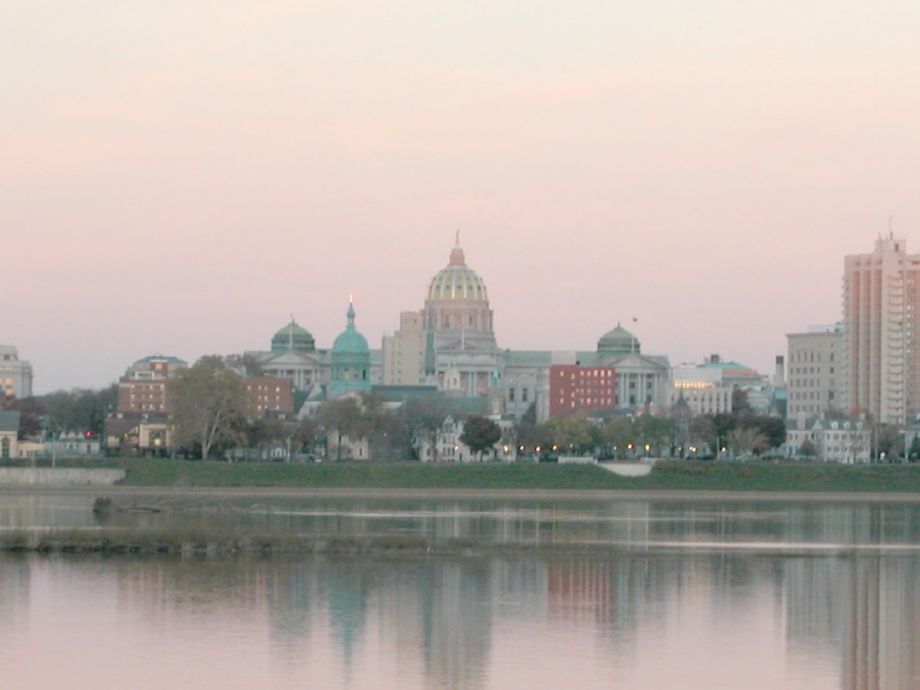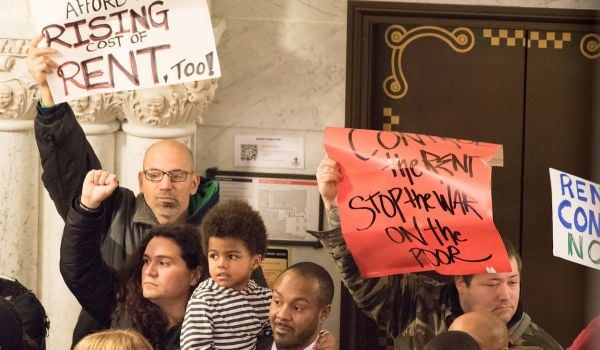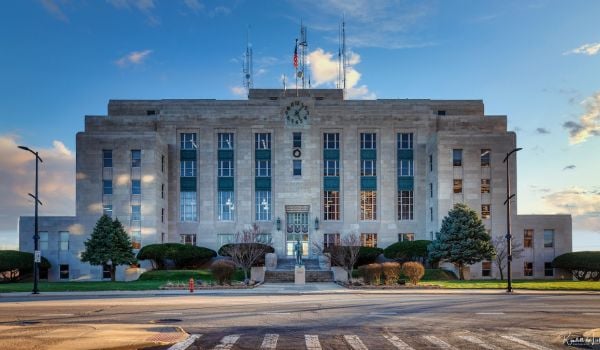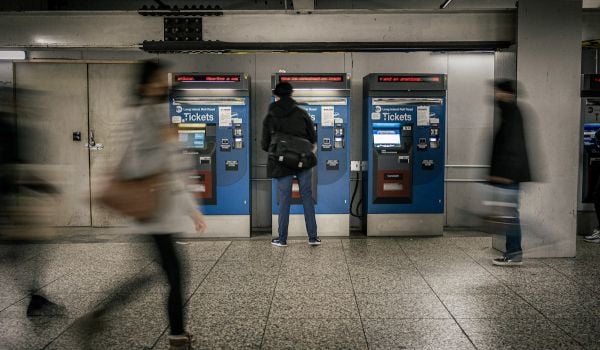In July, Pennsylvania’s legislature passed a law that could revitalize deteriorating homes across the state. The Whole Home Repair Act sets aside $125 million for grants to low and middle-income homeowners and forgivable loans for small landlords to repair or retrofit homes, along with money for staff and workforce development for three years.
The law, passed with bipartisan support as part of Pennsylvania’s 2022 budget, is intended to patch up homes owned by low and middle-income homeowners, improving safety and habitability. But it’s also designed to keep homes affordable for tenants.
Owner-occupied homeowners making no more than 80% of area median income can receive grants of up to $50,000, with no requirement to repay. But small landlords –defined as owners with 15 units or less – are eligible for loans whose full cost can be forgiven after 15 years only if they have not raised rents more than 3% annually. It’s a requirement that might stabilize some of the state’s neighborhoods while funding crucial improvements.
Landlords often claim that in order to make basic repairs to the health and habitability of a unit, they must hike rents, potentially displacing tenants. State Sen. Nikil Saval, who introduced and championed the legislation, says the program is meant to get around this problem.
“This is a way for those apartments to be made whole while at the same time not requiring any kind of increase,” Saval says. While the program is voluntary, Saval says landlords will no longer have excuses to forgo repairs. “Tenants can raise these issues with their landlords and point to the existence of the program” to get critical repairs, he says.
In addition to the 3% limit on rent increases, small landlords who want their loans forgiven must offer a three-year lease renewal to tenants living in the unit receiving the repairs.
Nearly 70% of Pennsylvania residents live in homes they own. But a significant number of those homeowners are low and middle income. Nearly 28% of owner-occupied homes, or over one million, have household incomes below $50,000 a year. And 6%, or over 209,000 owner-occupied homes have a household income below $15,000, a signal that many of the state’s homes may need repairs their owners can’t afford.
The legislation doesn’t fund new construction, but it could benefit the state’s housing supply. According to the National Low-Income Housing Coalition, the state has a deficit of 266,000 homes affordable to extremely low-income renters. While Saval views the program as a complement to building new housing, repairing units that are drifting into dereliction is crucial to stabilizing the housing supply. Saval says the program “would preserve a lot of housing that we would otherwise lose.”
It could also prevent blight. According to real estate industry analysts Attom, there were 53,000 vacant or abandoned properties across the state as of 2019. While 38,000 of those properties would not be eligible because they are “investor-owned,” or owned by large landlords, the remainder could benefit.
“It’s a blight prevention tactic,” says Cindy Daley, Director of Community Development Initiatives at Regional Housing Legal Services, a nonprofit law firm based in Pennsylvania.
The law is designed so that funds can be used to retrofit homes - this can include repairing leaks and drafts, which cause heating and cooling bills to skyrocket and increase energy use.
Advocates are also hoping the funds will help nudge a large backlog of homes that need to be weatherized but have been rejected from a federally-funded program due to their disrepair. Pennsylvania’s Weatherization Assistance Program helps homeowners fix up their homes to maximize their heating and cooling systems and reduce carbon emissions. It often turns away applicants due to federal guidelines which mandate that require properties don’t have high repair needs. The Energy Coordinating Agency told NPR that about half of applications for the weatherization program in Philadelphia are turned away; data from 2017 show that statewide, 36%of applications were rejected that year. The Biden administration has since increased funding for weatherization programs tenfold, but applicants must still rely on a patchwork of local and federal programs to repair those homes before they qualify.
“The homes with the biggest need don’t get help. Because in many areas of the state, there was no program to address those other needs,” Daley says.
Saval says the Whole Home Repair legislation was not based on any previous legislation and was written with the input of community groups.
“There is no model bill, we wrote this in our office,” Saval says. “We wrote it with heavy input from the affordable housing advocacy community, from legal aid groups, from environmental justice organizations, disability rights groups. They all played a part.”
The Whole Home Repair Act also sets aside money for staff, including navigators to help property owners sort through the patchwork of state and local repair programs that could supplement the Whole Home Repair funds. It also requires that counties implement workforce development in the form of apprenticeships and on-the-job training for repairs. Daley says this is necessary because there aren’t enough small contractors to take on the scale of repairs that the law envisions.
“It may be bothersome for a contractor that’s used to doing home building to take on a smaller home repair job,” she says.
The law does hold some risks, particularly when it comes to the participation of landlords. Daley says that many landlords refused to apply for Emergency Rental Assistance Program funds because they viewed the process as too onerous. Similarly, landlords who want to hike rents but are disinterested in their tenants’ health and safety issues could choose not to apply.
And despite the $120 million investment’s historic size, the law is not expected to meet the outstanding need for repair among Pennsylvania’s homes.
“We know that the need is absolutely greater, and is enormous,” Saval says. ”We’ve been receiving dozens and dozens of calls just to our office alone on how to apply.”
Saval says his office will need to fight to get the program re-funded sustainably. He says that the program’s success could help demonstrate the outstanding need to lawmakers. And if the program does not receive additional funding, it could complicate some of the state’s affordability provisions. In 15 years, counties will need to sort through rental data to enforce the affordability requirements, which will likely require dedicated staff.
Daley says that while the program is on the right track, its scope would need to be greatly expanded to address the overall problem.
“It is definitely what we need. And it will solve the problem for many homeowners and property owners and people seeking jobs,” she says. “But once you parse out that $120 million…and then you divvy it up between workforce training and home repair, and program staff…it’s a pretty big state.”
This article is part of Backyard, a newsletter exploring scalable solutions to make housing fairer, more affordable and more environmentally sustainable. Subscribe to our weekly Backyard newsletter.

Roshan Abraham is Next City's housing correspondent and a former Equitable Cities fellow. He is based in Queens. Follow him on Twitter at @roshantone.


















